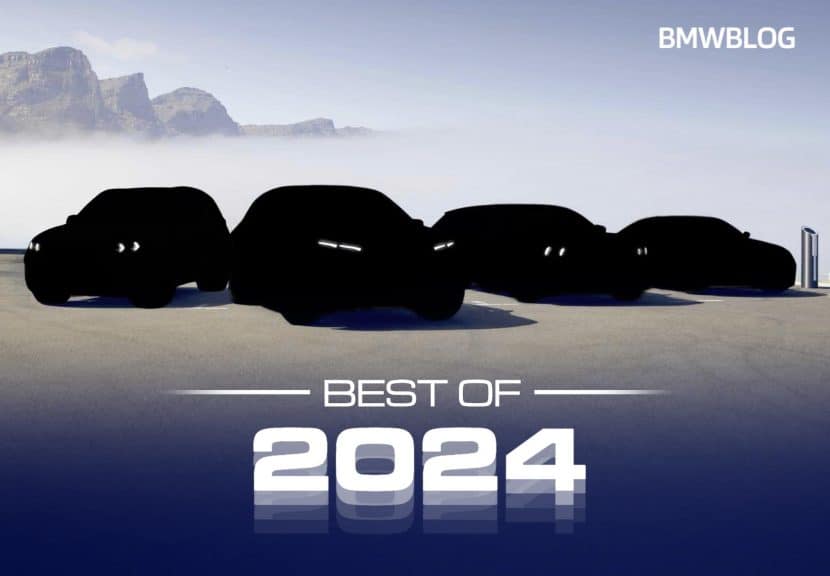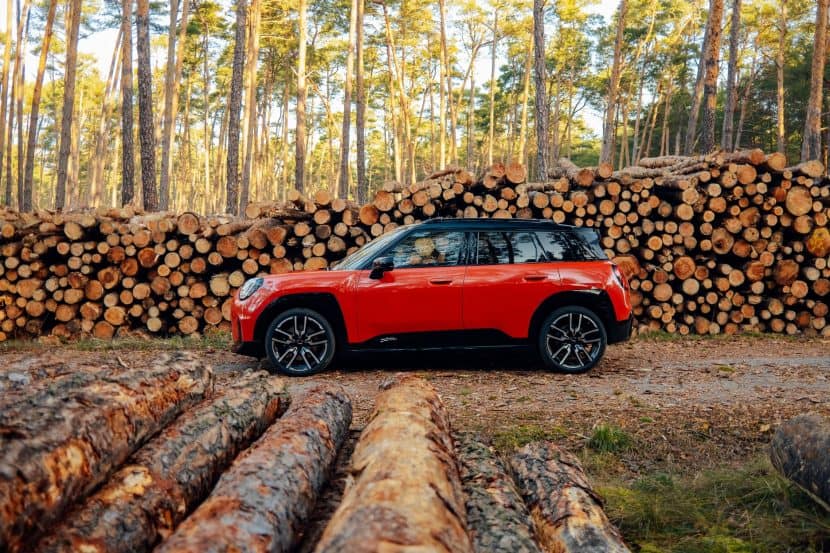
This is a Subaru WRX. If you’ve been anywhere near the base car (as a WRX buyer, at least) the stereotype says you’ll already be plotting Tien coilovers with spring rates similar to diamonds on the Mohs Hardness Scale, a nicer exhaust, and some Brembos pinching brake discs so big you could inscribe a lengthy epitaph to the STI on them.
Well, stereotypical Subaru WRX Owner, you’ve been beaten to the punch (mostly). The 2025 Subaru WRX tS sets out to take the base WRX and turn it into the one you’ll eventually end up with after a few hours on ECS Tuning. So should you trust Subaru to do the mods you would do anyway? I flew to Sonoma, California to find out.

Stepping back for a moment, it’s worth addressing the old WRX TR. It was also a trim with a track-focused suite of upgrades over the base car. Subaru tells me the TR is effectively no more, replaced by the tS (though some TR parts will find homes elsewhere). So what’s the new trim get you?
In short: bigger four-piston front and two-piston rear Brembo brakes with drilled rotors, adaptive suspension derived from the GT trim with stiffer modes all around, five drive modes adjusting steering, engine, and other parameters, an exclusive digital dash, and a suite of badges and black accents alongside a very sweet blue-accented interior.

It’s also worth the money to get Subaru’s best color since WR Blue: a new Galaxy Purple shade. Condensed, the changes sound minimal, but I think a lot of WRX owners may land on similar changes to the base car’s ride and braking if they were hitting the track. Notably, the tS still uses the same turbocharged 2.4-liter flat-four to make 271 horses and 258 lb-ft of torque via a six-speed manual and Subaru’s famed all-wheel drive system. It’ll run you a fair bit more than the WRX’s $33,855 MSRP, though Subaru will only say the tS’ price will land “in the neighborhood” of the WRX GT.
(Full disclosure: Subaru flew our writer to Sonoma, California and fed and housed him.)
Now that the numbers are out of the way, it’s worth talking about how the tS drives. In short, it fixes many of the gripes I had with the WRX Premium I tested last summer. For starters, the brakes are a massive improvement over stock, biting hard even after mind-bending laps at Sonoma Raceway from Subaru’s hot shoe and ex-F1 driver Scott Speed (yes that is his name). The tS’ five modes for the suspension are also much more aggressive than the base WRX’s ride, which helped to bring back some of that bold attitude more stripped-down WRXs of 20 years ago had. Subaru didn’t fix the shifter, though, and this soft, loose plastic lever remains a low point. In a world occupied by the $30k-ish Civic Si, everyone has to step up their manual-transmission game.

With carte blanche at Sonoma, I was able to explore the upper limits of the tS, finding them free from some of the understeer-y unpleasantness that can sometimes afflict AWD cars. Punch the tS into a corner, and its suspension responds beautifully, helping you angle the nose in towards the apex while the AWD system works with your right foot to help balance grip and acceleration on the exits. If you need the WRX to rotate in, lifting a hair is the best recipe to cull any understeer. Lift-off oversteer is only achieved at irresponsible steering angles and speeds… allegedly.
On glass-smooth tarmac, even the tS’ most extreme suspension modes feel a little soft, but the trade-off for a civil daily ride is worth it. Placing the car on almost any line is easy thanks to the ample grip from the Bridgestone tires and solid steering feel. I asked Subaru if they’d add a shift indicator of some kind, as it can be a little tough to sort out a solid shift point between tire and wind noise on track and the soupy gear lever makes sorting out clean shifts a little tough. Supposedly, pushing an OTA update to the car’s digital dash is a possibility. I found the ergonomics of high door sills, a tall seat, and a low, sloppy shifter a little off-putting, but Mr. Speed did no such complaining. Thankfully the pedals are well-placed for rev-matching, and until you’re turning laps like he is, I think it best to say the WRX tS works great on track despite complaints from slower beings (me).


On the road, you’ll find the story is much the same, though I think drivers will spend much more time observing the 2.4-liter here. On track, it sort of faded into the background between apexes and braking zones, especially with a helmet. On twisty Napa back roads, I had a much better opportunity to hear the WRX tS’ exhaust and play with the drive modes. Subaru’s individual mode is great, as I like lighter steering combined with more aggressive inputs, moving the suspension around as needed, but I want a second individual profile. Adding another would eliminate the need for the other four (Comfort, Normal, Sport, and Sport+).
The engine’s a solid one too, with that classic turbo Subaru feeling — nothing at all below 2,700 rpm and then everything the little sedan has got until redline. It’s a fun way to ride the boost wave, using the car’s all-wheel drive to keep it planted over uneven pavement, and I find the WRX to be the most fun over uneven, crappy pavement where the all-wheel drive system is at its limit. Otherwise, there’s simply too much grip for a good time.


All this makes the WRX tS the one to have. Between the performance enhancements where the WRX needed it most and the grippy Recaro buckets, the tS is track-ready without being a pain in the ass the other 97 percent of the time you’ll drive it. Turns out, the guys who took street cars rally racing still know how to mix in the right amount of performance without compromising the whole package.
[Images © 2024 Chase Bierenkoven/TTAC.com]
Become a TTAC insider. Get the latest news, features, TTAC takes, and everything else that gets to the truth about cars first by subscribing to our newsletter.
Source: The Truth About Cars


